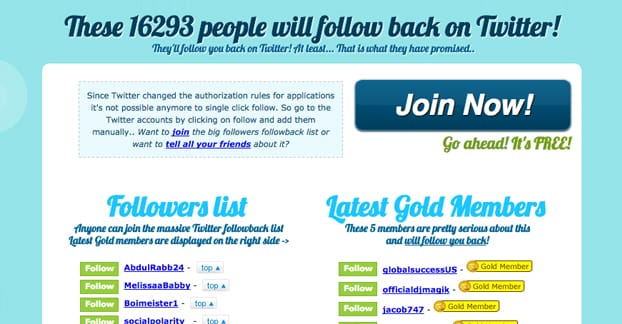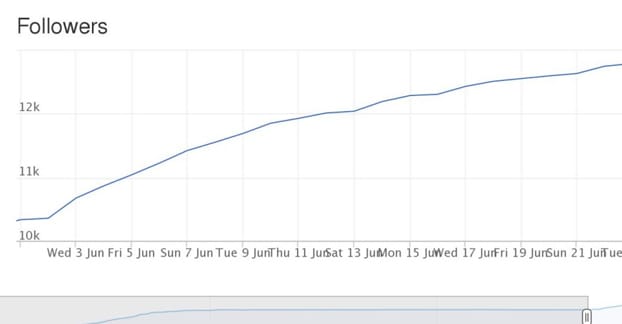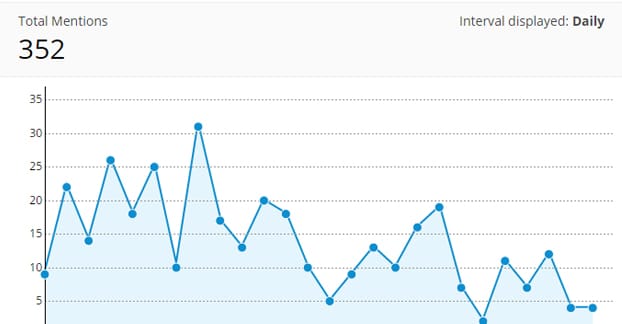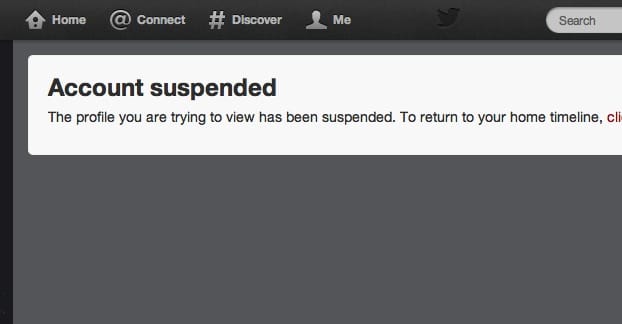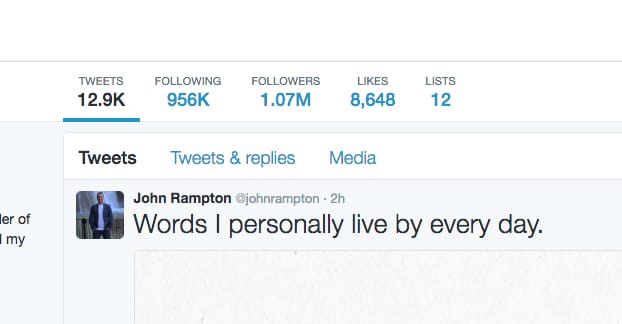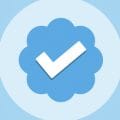I’m going to give you a bit of a list of users, but that’s not all this post is; first, I’m going to spend some time telling you how it’s a bad idea to abuse follow-backs and autofollow accounts.
Trust me, you’ll be glad you read it, and after, we’ll have a list of users who follow back. You’d be wise to understand what you’re doing to your account before you actively follow a bunch of these accounts.
Strap in, friends, and get ready for a crash course on follows.
Autofollows and Follow Back Culture
The root cause of this whole issue is something that existed back in the very early days of Twitter. It was a sort of etiquette of politeness amongst most of the users of the site. See, on social networks like Facebook, there’s only one form of person to person relationship, and that’s the friend relationship. It’s a two-way interaction. When you friend someone, you see their posts and they see yours. It’s a mutual expression of interest.
On Twitter, the primary interaction is a follow. This is inherently one-sided. If I follow you, I see your updates, but you don’t see any of mine. All you get is a notice that I followed you, which gives you a chance to follow back if you like. You are not, however, required to do so.
The early days of Twitter found a lot of people missing that two-way interaction. They hadn’t quite gotten the hang of using Twitter as a broadcast method and using replies for two way communication. Instead, they formed a sort of social contract. Follow me and I follow you.
This essentially turned a one-sided follow into a two-sided friendship by implied social consent.
As you might expect, marketers somewhat quickly glommed on to this idea and decided to abuse it for their own growth. They would follow people and expect to be followed back. At the time, this worked quite well. Most people had that engrained social contract in mind, and out of 100 people you followed, you would probably get around 90 following you back.
As more and more businesses abused this without any real value to be had, the culture began to fade. A lot of businesses wouldn’t post much more than just their own updates, and they wouldn’t interact with or engage with the people they followed. It took a two-way follow relationship and returned it to being one-way by virtue of ignoring the other party.
Some brands started to take this even further. They started to follow people, wait just long enough to get the follow back, and then unfollow them. This stemmed from the perception that having a lot of people you follow meant that you were trying to abuse follow-back culture, which of course they were. They figured they would cloak it by unfollowing people, and to an extent that worked for a while.
Why Follow Back Doesn’t Work
All good things must come to an end. Abuse of a benign system, leading to its death, is a common way for new rules to be formed. In this case, three things happened.
First, a lot of people started making Twitter bots that would automatically follow someone back when they were followed. This was taking place around the time when people were starting to learn to abuse the system, and is part of why it started to decline. When the follow comes from a bot, there’s no real engagement there. The people running such bots probably aren’t checking their feeds all that much. You end up with a lot of accounts that are, more or less, just fake accounts that exist to pad your count. Many of the rest were brands, and those brands were obviously going for a one-sided broadcast relationship with Twitter.
As you might suspect, getting an account following you that doesn’t actually monitor its feed or engage with your posting doesn’t really help you at all. Having a million followers but zero engagement is a sure sign that you’re doing something wrong, and it’s obvious even to those who don’t pay a lot of attention to what they’re doing on Twitter.
Second, a lot of people stopped following anyone back without carefully checking their profile. If someone follows me on Twitter today, I take a look at the kind of content they post to see if it’s something I want on my feed. I don’t automatically follow back because half of the people who follow me are spambots designed to follow anyone who uses certain hashtags or keywords in their content. I get a couple of those a week, easily, and a lot of them disappear pretty quickly even if I don’t report them. As it turns out, their behavior is very easy to track and Twitter is proactive about getting rid of them.
As for those who are real people, I’m still careful about the ones I follow, simply because I have a packed feed. The more people I add, the more content I miss. There’s one way around this, which is to categorize everyone into Twitter lists and leave the unfiltered feed for the dogs, but that can take a lot of work to get set up if you have more than a handful of people you follow.
Third, Twitter started monitoring the behavior and started penalizing accounts that abused follow-backs and follower churn. You can read about that when I covered it here, or read about it in Twitter’s official rules.
Essentially, what Twitter looks for is follower churn. They don’t care about follow-backs, but they do care about abuse of the system when you delete the followers you just added. A few here and there are okay; it’s reasonable to follow someone, realize they aren’t posting the kind of content you want, and remove them. It’s only when you’re doing it repeatedly with large numbers of accounts that you run into issues.
Even then, Twitter is prone to suspending accounts rather than banning them for first time offenses. Once you’re clear, you can strive to stay on the good side of things and avoid flagging your account again. Of course, at that point you’ve used up your benefit of the doubt. If you step across the line on this or any other issue later, you may encounter zero tolerance and find yourself banned permanently.
Example Accounts
Now, just to show you some examples, I’ve tracked down users who are known for following the people who follow them. I’ll also take a bit to point out what makes them a bad idea to follow. Sure, you can follow them, get the follow back, and remove them, but then you’re just setting yourself up to be banned. So you have two options; fill your follows list full of accounts like these, or risk being banned for the churn:
- https://twitter.com/giveawahs, an account that bot-posts spammy contests from brands you’ve never heard of before.
- https://twitter.com/TqTqhKSA, an account with a gibberish name and posts entirely in Arabic. If you’re not marketing to that demographic, don’t stack your profile full of them.
- https://twitter.com/DavidHallinan3, a guy who streams games and posts about nothing other than his own streams. At least he’s American?
- https://twitter.com/SEXYLIPS, a seven year old account with one tweet from 2009 and an egg profile picture.
- https://twitter.com/Krezz69, a brand new account that doesn’t post.
- https://twitter.com/1mosiah, an idle account with no information added to the profile.
- https://twitter.com/billyblake2016, with an obviously fake name, spamming to increase Twitter followers in a really basic, broken way.
- https://twitter.com/JesusSaysTruth, an account that does very little besides push a Christian agenda and retweets bible quotes.
- https://twitter.com/Promotion_Era, an account that has absolutely nothing of value, just a bunch of bit.ly links and what I assume are titles to boring blog posts.
Seeing a pattern here? Almost all of them are either idle accounts, bot accounts, spam accounts, or low-tier marketers/gamers/producers/musicians looking to spam their way to the top instead of actually growing an audience that will care.
Here’s the thing most people seem to fail to realize. You cannot get someone to follow you and expect them to grow to like you. You cannot gaslight your followers or socially abuse them into some sort of Stockholm Syndrome appreciation of your content. They will at best ignore you, and at worse just remove you.
If you do not build an audience out of the people who are interested in your brand and your content, you will not gain them. You will not get engagement from the audience you have. You will not grow in exposure without paying for it, because the people who follow you won’t be retweeting you or sharing your content. You won’t get any benefit out of the audience you build.
All of the examples above came from Let’s All Follow Back, by the way, is chock full of more of the same. Over 16,000 of them, to be precise. If you really, really want to go this route, well, there you go.
One thing to note is that there’s no actual enforcement of the follow back through that site. They simply expect anyone who follows one of the accounts on the list to be followed back by that account. As you can see, a lot of them are bots, fake accounts, or idle accounts, so how likely are they actually to follow you back? I would venture to guess not very.
Methods to Grow Twitter Organically and Effectively
Abusing follow-backs is a bad way to grow on Twitter. Instead, you should focus on more organic techniques, or suck it up and pay a little money. You can run ads that will get you way more legitimate follows for a pretty minor cost. Dedicate $30 for a month of ads and you’ll be surprised at how well they work.
- Promote your Twitter account on your site, your newsletter, your physical marketing, and your other social media accounts. Get the people who are already interested in you to follow you. You get double the value from the same audience member when they follow you in more than one location.
- Tweet interesting content beyond just links to your website. I’m sure you have opinions or something to say about the world around you. Talk about your industry, talk about current events, and share interesting happenings.
- Retweet interesting content from other users in your industry or your niche. You don’t need to spam your account with retweets, but you should share content from people whose voice is respected or whose perspective is interesting. We’re talking about finding content that’s bringing value to the table and sharing it, even if it doesn’t directly benefit your site to do so.
- Use hashtags when you post. 1-3 tags of various types, ranging from generic tags to industry relevant tags to branded tags that control conversation around your content. The goal is to use hashtags to attract new users who may be browsing those tags looking for interesting content. They have intent; you need to bring the value.
- Find something of unique value to bring to the table. Do you have an invitation to an exclusive event your followers can’t attend? Livetweet it! Do you have the ability to get product demos for upcoming releases? Tweet about them and write a review, which you can link for even more value. Find your unique selling points.
- Identify influential people in your industry and engage with them. Build relationships with the people who are actually interested in what you might have to say, and whose content can be of value to the people who follow you. Foster this relationship to get value out of it.
Yes, I know. It’s a lot more work than just following a bunch of accounts. You know what else it is? Profitable. If all you’re doing is filling your followers list with a bunch of inactive or bot accounts, you’re not getting anything out of it. You’re spending time to boost a number that doesn’t matter, and the numbers that do matter – sales, profits, shares – go nowhere. If that’s what you want, by all means, be my guest. I’ll be over here building Twitter accounts the right way.
